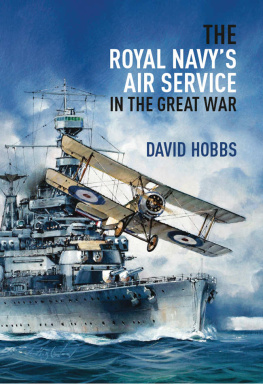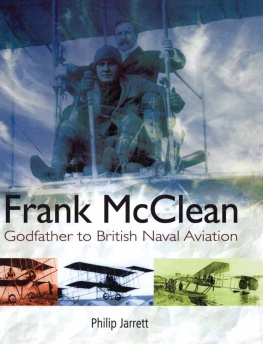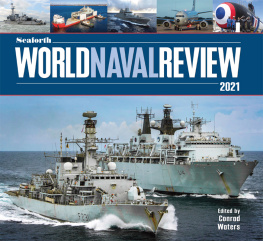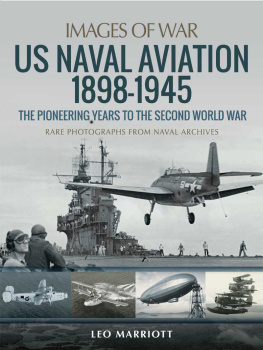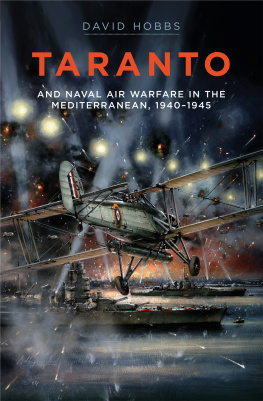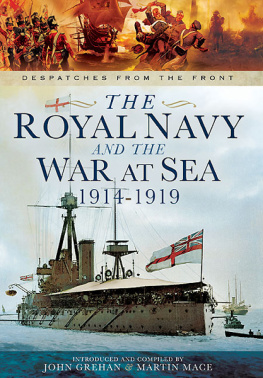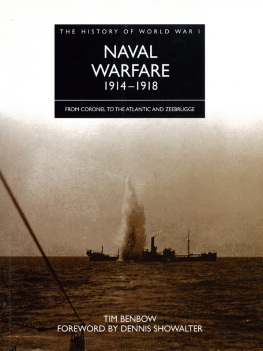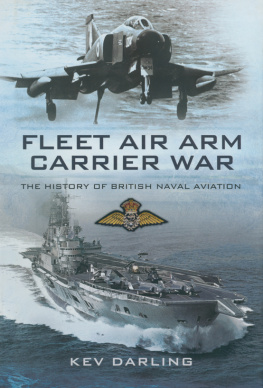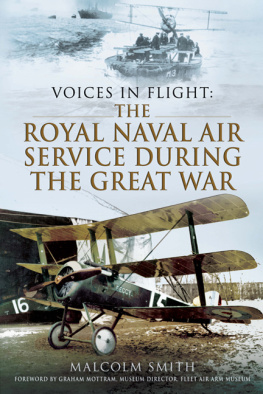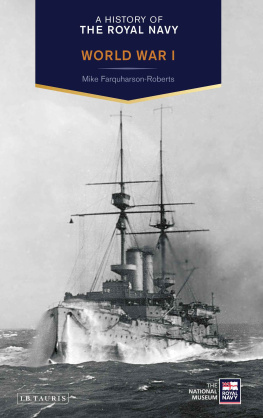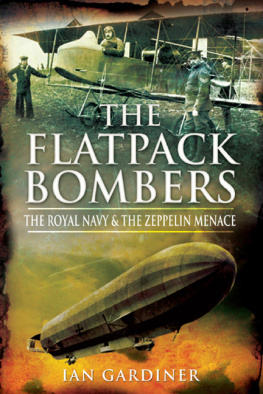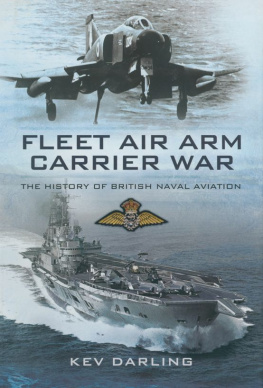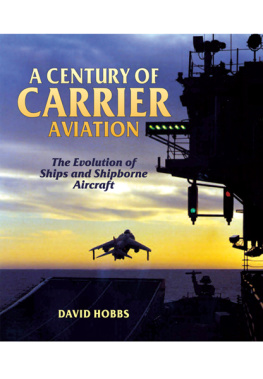THE
ROYAL NAVYS
AIR SERVICE
IN THE GREAT WAR

THE
ROYAL NAVYS
AIR SERVICE
IN THE GREAT WAR
DAVID HOBBS
Seaforth
P U B L I S H I N G
Frontispiece: Commander R Bell-Davies VC RN landing a Sopwith 1 Strutter on HMS Argus during her flying trials in the Firth of Forth, October 1918.
Copyright David Hobbs 2017
First published in Great Britain in 2017 by
Seaforth Publishing,
Pen &Sword Books Ltd,
47 Church Street,
Barnsley S70 2AS
www.seaforthpublishing.com
British Library Cataloguing in Publication Data
A catalogue record for this book is available from the British Library
ISBN 978 1 84832 348 3 (Hardback)
ISBN 978 1 84832 349 0 (Kindle)
ISBN 978 1 84832 350 6 (ePub)
All rights reserved. No part of this publication may be reproduced or transmitted in any form or by any means, electronic or mechanical, including photocopying, recording, or any information storage and retrieval system, without prior permission in writing of both the copyright owner and the above publisher.
The right of David Hobbs to be identified as the author of this work has been asserted in accordance with the Copyright, Designs and Patents Act 1988.
Contents
Foreword
In 2013 David Stevens, then the Director of Strategic and Historical Studies at the Sea Power Centre Australia, asked me to give a talk on the Royal Naval Air Service as part of the King-Hall Naval Historic Conference in Canberra which had as its theme The War at Sea 191418. It was a subject that had always interested me and, fortunately, I had gathered a considerable amount of research material on it over the years but had never found the time to put it to good use. Planning for the talk had the effect of focusing my attention and the more I read about the RNAS the more fascinated I became and so I determined to write a book about it as soon as I could fit it into my schedule for Seaforth Publishing. This is the result.
Fortunately my friend David Brown, when he was Head of the Naval Historical Branch, had shown me an unpublished 1919 Admiralty manuscript which contained material on naval aviation which had originally been intended for inclusion in the history of Great War naval operations. He allowed me to photocopy it and this proved to be doubly fortunate since the manuscript contained valuable material gathered from primary sources in the Admiralty archive and the original appears to have been lost when the Branch moved from Great Scotland Yard in London to its present location in Portsmouth Naval Base. As is so often the case, the more I found out about the subject the more I found that there was to know and a book that covered every aspect of the RNAS and its operational, technical and political history would be a very large one indeed. I decided, therefore, to compromise and produce a book that will, I hope, give the reader a good idea of what the RNAS did and how and why it did it, together with information about the ships, aircraft and weapons that it used. I have, as always, tried to make the story readable with plenty of human interest, a task made easier by the fact that from its very beginning the RNAS seems to have attracted some remarkable characters into its ranks. The last of them died years ago but many left their impressions in autobiographical books which I have used to give colour to events. Some of them left accounts that were so detailed that I almost feel I know the individuals concerned and certainly have a good impression on their thoughts and opinions.
Studying the RNAS in detail made me aware of just how great an influence it continued to have on naval aviation after its demise, not just in the RN but especially in the United States and the rest of the world. Captain GW Steele USN was tasked in 1918 with studying the part played by aviation in the Grand Fleets operations and his subsequent report to the General Board stated that so many ideas had been gained from the British that any discussion of the subject must consider their methods. The RNAS achieved what it did against considerable antagonism, not just from the enemy, as one might expect, but also from British politicians, despite the fact that some of those who criticised it openly admitted to having no very clear idea of what the service actually did. Fortunately, more rational counsel prevailed in the United States and the USN managed to retain control of its air arm and carry forward the work from the point where the RNAS was forced to leave it.
It is a sobering thought that had Edwin Dunning not shown that deck landing was possible when he did and had Argus been completed as a Campania-like seaplane carrier, naval aviation might well have atrophied quickly after 1919 as the bomber lobby within the RAF claimed to have rendered all types of warship vulnerable and obsolete. Thankfully, the RNAS did enough in its short existence to show how fundamentally important aviation had become to every aspect of naval operations by 1918 and its legacy formed the basis of fact on which the Admiralty placed its long struggle through the years of joint control to regain full control of the aircraft that operated from ships that culminated with the Inskip Award of 1937. This book can therefore be considered as a prequel to my earlier books on the British Pacific Fleet and the post-1945 British Carrier Strike Fleet. As the editing work on this book begins I have already started work on my next book for Seaforth Publishing which is to describe the complicated progress of the Royal Navys air component in the interwar years between 1919 and 1940.
David Hobbs MBE
Commander Royal Navy (Retired)
Crail
February 2017
Acknowledgements
As always, my efforts have been encouraged and helped by my wife Jandy and both my son Andrew and his wife Lucyelle. Over a number of years several people have helped me to broaden my knowledge of the RNAS and, both directly and indirectly, to write this book. Prominent among these is my friend the late David Brown, for many years Head of the Naval Historical Branch, who not only encouraged me to write but made me aware of several unpublished manuscripts in the Branch. Fortunately, before his untimely death in 2001 he insisted that I photocopy a number of them for use as future research material. His successors Christopher Page and Stephen Prince, together with Jenny Wraight,the Admiralty librarian, have also became friends and always proved supportive and helpful when I discussed projects and sought specific documents. Andrew Choong and Jeremy Michel of the Historic Photograph and Ship Plans Department of the National Maritime Museum at the Brass Foundry in Woolwich have also helped with research material and a visit to look at their archive material is always a pleasure to be keenly anticipated. I have learnt a great deal about the Grand Fleet and its operation from the events in Orkney which have been organised by Moya McDonald over the past decade and I am grateful both to her and John Leith for their enthusiasm and kindness. There is always so much more to learn about the Royal Navy and its air arm in the islands that surround Scapa Flow.
Next page
